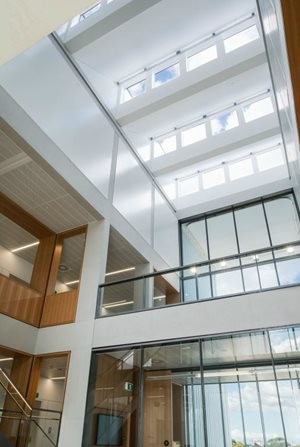Prime Minister Tony Abbott has officially opened Sydney’s Westmead Millennium Institute (WMI) by BVN architects and unveiled the new headquarters for one of the largest medical research institutes in Australia.
BVN Principal Julian Ashton called his team’s design flexible and connective, and suggests the building form reflects the idea of “seeing the science”, where observers can see the inner workings and functions of the scientists.
“The building is designed to provide a flexible space that facilitates connectivity and collaboration amongst the research community, in line with WMI’s “bench to bedside” approach,” said Ashton.
The nine-storey, $110 million complex comprises 17,500sqm of research laboratories, plus core high technology facilities used for disease gene discovery, cell sorting and imaging, and the development of new cellular and genetic therapies.



A central atrium fills the circulation spaces with natural daylight and offers scientists an opportunity to interact with views across the floors and into different research spaces.
The laboratories are stacked atop each other and planned in a linear arrangement to provide efficient services and improved circulation and flexibility in the use of the laboratory areas. The architects say this design will also accommodate future expansion of the laboratory areas.
Ashton pointed out that the heart of the facility and the social spaces take up the lower levels with a two storey café space opening to a large external garden and recreational area.




WMI executive director Professor Tony Cunningham said in a media statement that it has been carefully designed to facilitate collaboration between different medical research disciplines.
“The building encourages interaction and the exchange of knowledge and ideas between researchers who were previously physically isolated from one another,” said Cunningham.
“This is enhancing collaborations across disciplines and I believe it will lead to some significant research advances.”
The WMI says it will bring together almost 400 clinicians, scientists, postgraduate students and support staff with the aim of accelerating research into Australia’s major health problems and translating its outcomes into new diagnostics, prognostics, preventions, therapies and cures.



Images: Mark Syke Photography

